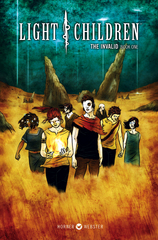In the midst of all the other things keeping me busy and away from blogging, some very nice people nominated me to serve on the Board of Advisors for the IA Institute. I’m flattered and honored, and a bit intimidated. But if elected, I’ll give it my best shot.
They asked for a bio and position statement. Here’s the position bit I sent them:
This [Information Architecture] community has excelled at creating a “shared history of learning” over the last 10 years. We’ve seen it bring essential elements to the emergence of User Experience Design, in the form of methods, tools, knowledge, and especially people. I think the IAI has been essential to how the community has developed, thanks to the hard work of its volunteers and staff creating excellent initiatives for mentorship, careers and other important needs.
The next big challenge is for the IAI to become more than a sum of its parts. How can it become a more influential, vital presence in the UX community? How can it serve as an amplifier for the amazing knowledge and insight we have among our members and colleagues? How can it evolve understanding of IA among business and design peers? And how can we better coexist and collaborate with those peers and practices?
From the beginning, IA has grappled with one of the most important challenges designers now face: how to define and link contexts usefully, usably and ethically in a digital hyper-linked world. I don’t see that challenge becoming any easier in the years ahead. In fact, the digital world is only becoming more pervasive, strange and exciting.
As a board member, my focus will be to help the IA Institute grow as a valued, authoritative resource for that future.
UPDATE:
Already, I feel the urge to further explain.


 The terrifically talented
The terrifically talented 

